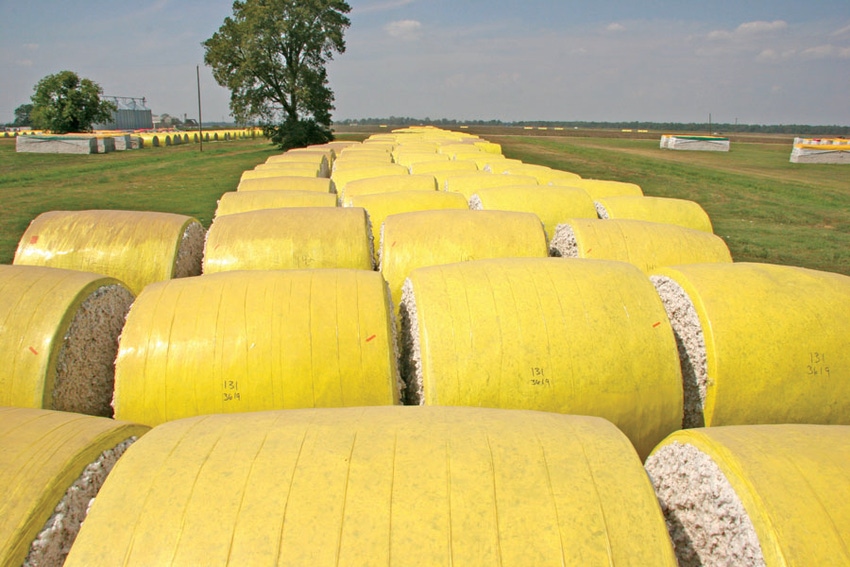
As the number of bales processed by cotton gins increased, greater cost efficiencies were realized, says Tommy Valco, cotton technology transfer and education coordinator for USDA’s Office of Technology Transfer at Stoneville, Miss. He presented results 0f a 2010 survey at the annual meeting of the Southern Cotton Ginners Association, held in conjunction with the Mid-South Farm and Gin Show at Memphis. In all regions, seasonal labor was the largest single expense item of the five major variable costs.

Gins in the Mid-South and Southeast regions had the lowest per bale ginning costs, while those in the Southwest and West were the highest, according to a survey conducted in the 2010 season.
And says Tommy Valco, cotton technology transfer and education coordinator for USDA’s Office of Technology Transfer at Stoneville, Miss., as number of bales ginned increased greater cost efficiencies were realized. 
He presented the survey results at the annual meeting of the Southern Cotton Ginners Association, held in conjunction with the Mid-South Farm and Gin Show at Memphis.
Across the cotton belt as a whole, the average total variable costs was $20.95 per bale, with an average 31,144 bales ginned. Of those costs, seasonal labor accounted for $7.04; repairs, $4.40; bagging and ties, $4.33; electricity, $3.79; and dryer fuel, $1.39.
In the Mid-South, for an average 23,695 bales, the costs totaled $18.65; in the Southeast, for an average 24,122 bales, the costs totaled $20.06; in the Southwest, for an average 39,639 bales, the average was $21.07; and in the West, with an average 27,014 bales, the cost was $26.44.
Across the belt, gins with the smallest volume had the highest costs. Those ginning less than 10,000 bales had variable costs of $24.83 per bale; those ginning 15,000 to 25,000 bales, $19.89; those ginning 25,000 to 40,000 bales, $19.54; and those ginning more than 40,000 bales, $18.39.
Labor costs were higher in the West, at $16.80 per bale for total labor; $11.28 in the Southwest; $11.51 in the Mid-South; and $11.09 in the Southeast. The beltwide average was $12 per bale for labor.
The 2010 cotton crop produced 17.6 million running bales from 10.7 million acres and was ginned by 700 operating gins, averaging 25,000 bales per gin.
“Gins in the Southeast, Mid-South, and Southwest had relatively low dryer fuel costs in 2010,” Valco says. “It was a good ginning year — they didn’t have to use a lot of fuel to dry down cotton.
While variable costs went down as number of bales ginned increased, mostly due to reductions in per bale labor costs and some reduction in energy cost, gins processing 20,000 to 40,000 bales per year can achieve efficiencies similar to those processing 100,000 bales, Valco says.
“I encourage gin managers to study these data and compare them to their gin’s variable cost numbers to see where they fall on the trend line. If your numbers are way above or below the line, you probably need to look at some of the things you’re doing and try to make improvements."
Electricity usage is an area that can vary considerably, he says. “We have some gins that average less than 30 kwh of electricity per bale. If you don’t know how much electricity you’re using per bale, you need to take a look at your operation, see where you fall in these numbers, and determine if you can make changes that will result in cost savings.”
Automated bale bagging systems can also reduce labor needs and increase efficiency, Valco says. “The systems are expensive, so gin volume will be important to make them economically feasible.”
The trend toward plastic bagging and ties is increasing with automatic strapping systems, he says.
“Cotton pickers with on-board module builders were a hot topic at the Beltwide Cotton Conferences and at our USDA ginning schools, particularly about systems for opening modules. About 10 percent of our survey information was from gins that were processing round modules. I expect that number will increase rapidly in the coming years and could reach as much as 50 percent.
“I don’t think the best mousetrap has yet been built for handling these modules, and that there are still opportunities to more efficiently open and handle them.”
Of gins responding to the survey in 2010, an average 5.2 percent beltwide said they handled the round modules. The percentage was highest in the Southeast, 9.9 percent, followed by the Mid-South, 8.2 percent, the Southwest, 4.1 percent, and none in the West.
A number of “apps” are becoming available to enhance productivity, Valco says, among them for cotton warehouse flow, locating and retrieving modules; monitoring gin performance via smart phone; and facial recognition software to track employees and monitor what they’re doing.
“I expect these to increase significantly in the coming years,” he says.
The report on the Ginning Costs Survey is available under the Publications link at http://msa.ars.usda.gov/gintech/
About the Author(s)
You May Also Like



